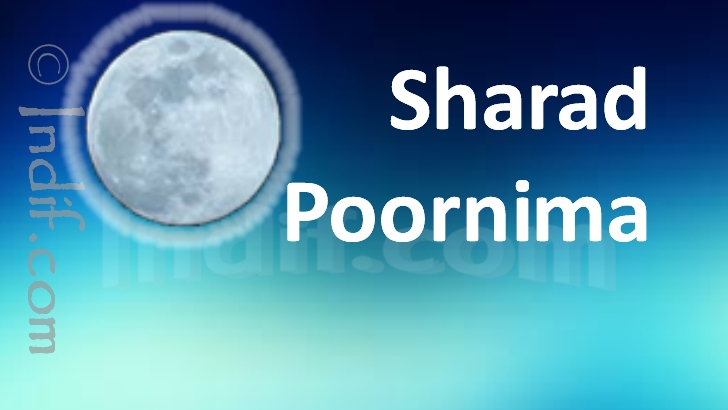![]()
Sharad Poornima is also known as Kojaagari Poornima or Kumar Poornima.It is celebrated on the full moon day of the Hindu lunar month of Ashvin (September - October). The rainy season is over and the brightness of the full moon brings special joy. This is a traditional celebration of the moon and is also called the Kaumudi celebration, Kaumudi meaning moonlight. It is also referred to as Rasa Purnima, or Sharath Purnima.
The "Sharad" in Sharad Poornima signifies the "Sharad ritu" (season) of the year. Basically a harvest festival, it also has religious significance. It is believed that on this night Goddess Lakshmi visits from place to place asking Kojagari (meaning "Who is awake") and bless those who are found awake. Therefore, people don't sleep this night and spend whole night singing, dancing and remembering god.
According to another belief sharad poornima is closely associated with Lord Krishna and Radha and Gopis. Lord Krishna began his Raas Leela with Radha and the gopis on the night of Sharad Poornima.
Medical Significance:
It is considered that the Moon and the Earth are at a closer distance on Sharad Poornima night. Due to this, the rays of the moon have several curative properties. Keeping food under the moonlight nourishes both the body and the soul. That is why, Kheer is prepared at kept under moonlight for the whole night and eaten in morning,on the next day.
Regional Celebrations :
- In Gujarat, the festival is known as Sharad Poonam. People celebrate it by doing Garba and Raas.
- After Durga puja, this is another important festival celebrated in almost every house in West Bengal. The Bengali people call it Lokkhi Pujo and arrange several bhog and upachar for mother goddess Lakshmi.
- In Orissa, it is celebrated as Kumar Purnima. Kumar or Kartikeya, the handsome son of Shiva, was born on this day.







